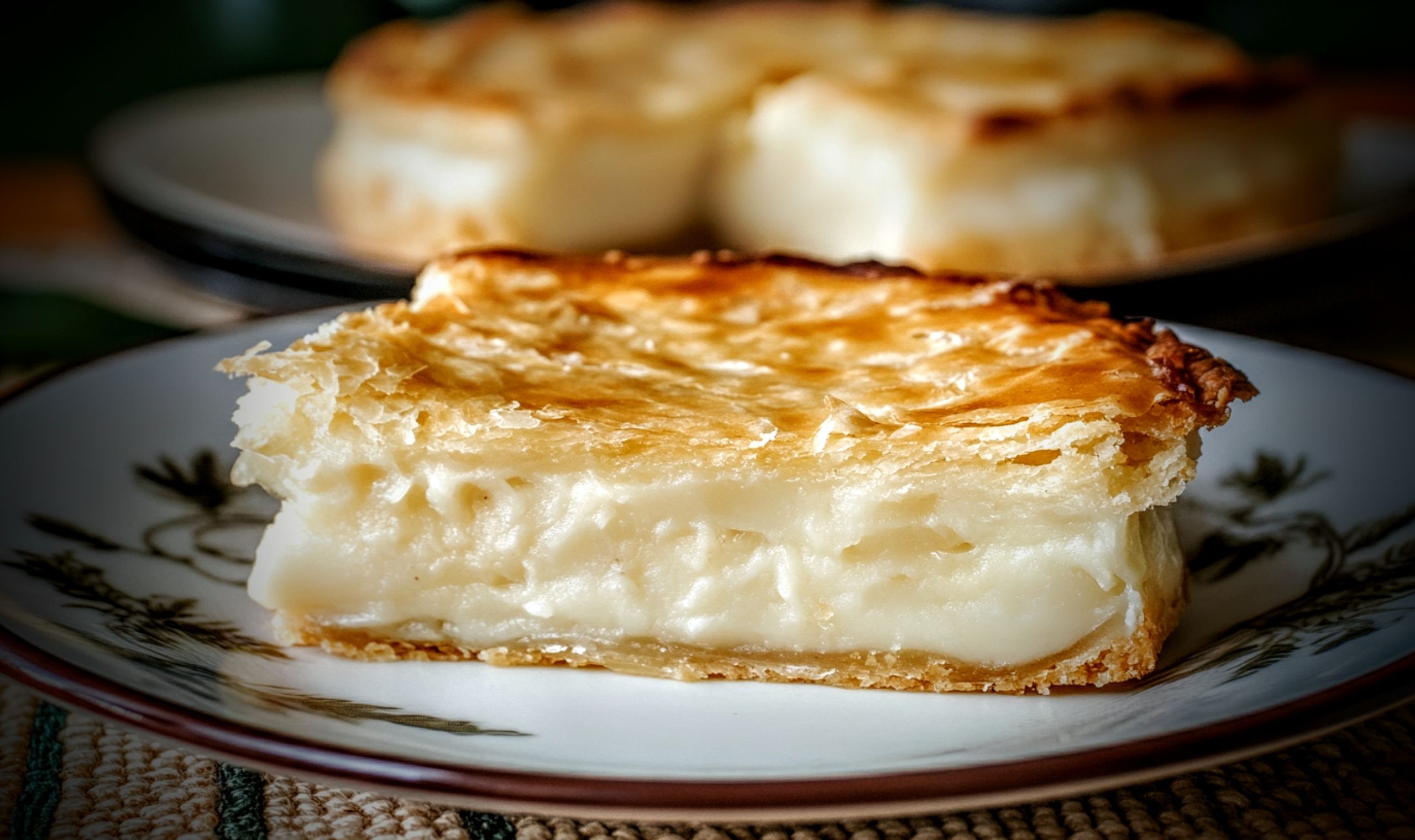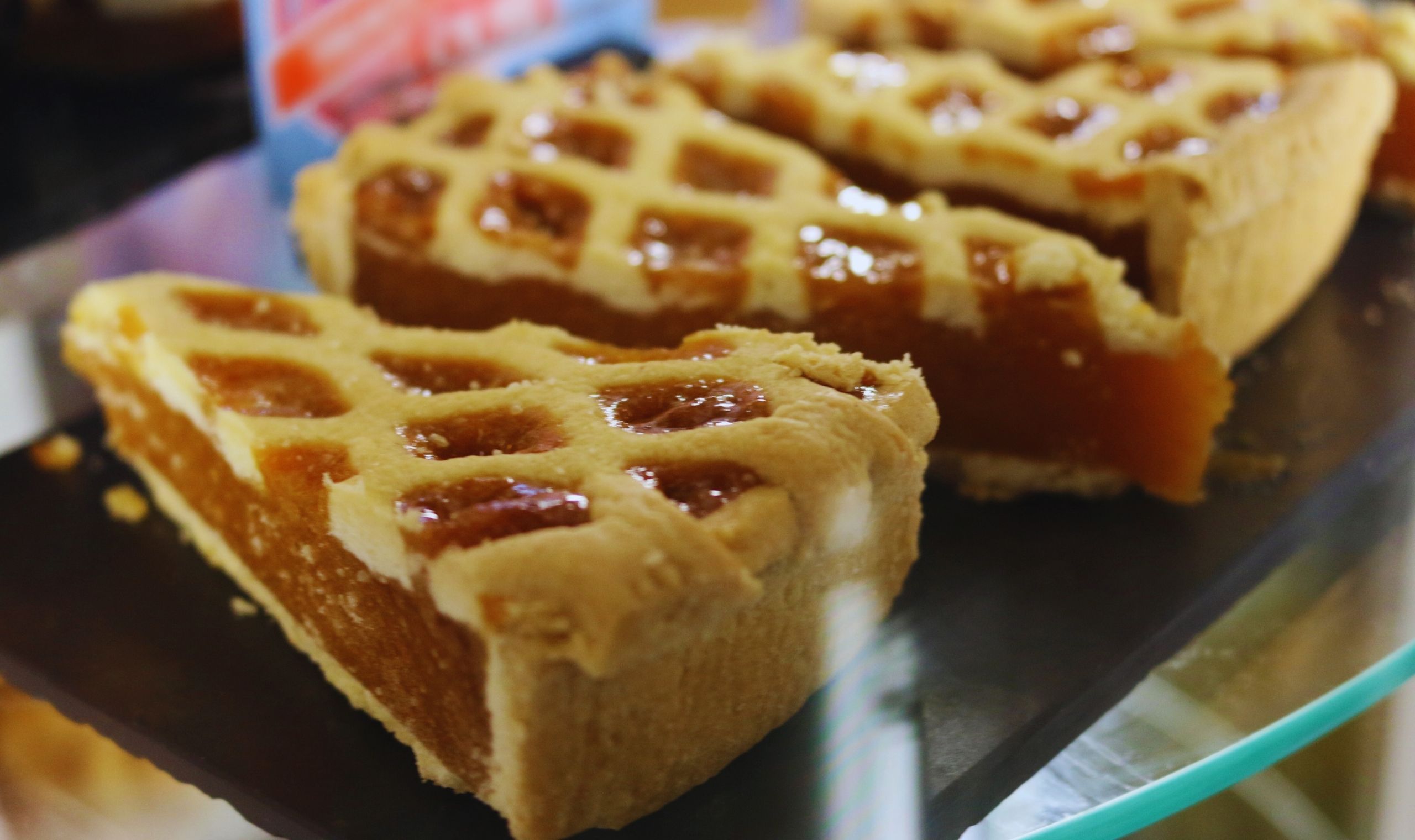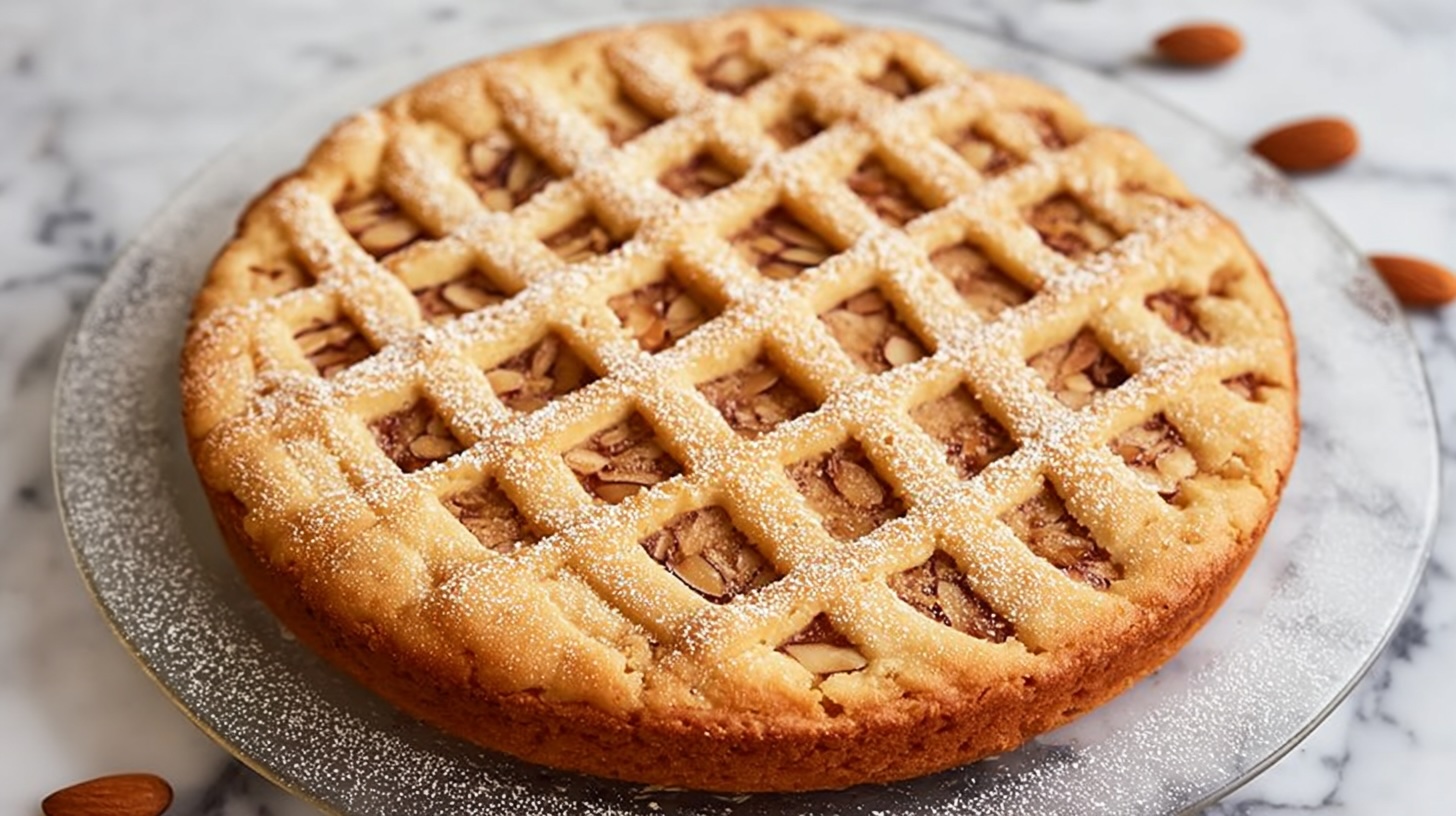Buko Pie: The Coconutty Treat
When it comes to Filipino desserts, buko pie is a national treasure. This humble yet utterly delicious pie is packed with soft, sweet coconut meat and creamy filling, all wrapped up in a golden, flaky crust. It’s the kind of dessert that feels like a tropical holiday in every bite—sunny, indulgent, and a little bit messy. It’s not just food; it’s an edible love letter to the Philippines.
From Laguna with Love
Buko pie hails from Laguna, a province south of Manila known for its lush coconut groves. The story goes that a clever entrepreneur named Soledad Pahud brought the concept to life after working as a home economics teacher and briefly living in the United States. Inspired by the American apple pie but lacking apples, she turned to the local bounty of young coconuts (buko) to create a pie that was uniquely Filipino.
Since its debut, buko pie has become a staple in roadside stalls and pasalubong (souvenir) shops, especially in Laguna. Travellers returning from the region often carry boxes of the stuff, a sweet reminder of their trip and a surefire way to earn smiles from friends and family.
Regional Twists and Innovations
While Laguna holds the crown as the birthplace of buko pie, other regions have made their mark with subtle variations. In Batangas, you might encounter a richer custard filling, while some bakers in Quezon add a touch of pandan for a fragrant twist. There are also modern takes on the classic, like buko pie with cheese, which adds a savoury note to balance the sweetness.
For those who want to push the envelope, chocolate-infused buko pie or versions topped with crumbly streusel are starting to pop up. The core concept remains the same, but the flavour options are growing as bakers get creative.
Perfect Pairings: What to Drink
There’s nothing like a chilled glass of buko juice to accompany your slice of buko pie. Made from fresh coconut water, it’s a natural pairing that keeps things light and refreshing. If you’re in the mood for something warm, a cup of barako coffee—bold, strong, and unapologetically Filipino—is perfect for cutting through the richness of the pie.
Feeling a bit more indulgent? Try pairing it with a creamy avocado shake or a scoop of ube (purple yam) ice cream. These tropical flavours enhance the coconut’s natural sweetness while adding their own unique charm to the mix.
What Goes on the Plate
Buko pie is a standout dessert, but it doesn’t have to fly solo. Pair it with a platter of tropical fruits like mangoes, pineapples, and bananas for a full-on island vibe. A dollop of whipped cream or a drizzle of caramel can take things up a notch without stealing the show.
If you’re serving buko pie as part of a bigger spread, consider balancing its sweetness with savoury Filipino favourites like crispy pata (deep-fried pork knuckle) or adobo. The contrast makes for a truly satisfying meal that hits all the right notes.
The Coconut: Star of the Show
Let’s take a moment to appreciate the buko itself. Young coconuts are the key to this pie’s success. Their soft, tender meat has a subtle sweetness and a texture that’s worlds apart from the mature, fibrous kind. The filling is often made with coconut milk or cream, enhancing the natural flavour and creating that luscious, creamy consistency that makes buko pie so irresistible.
Not all coconuts are created equal, though. The best buko comes from freshly harvested young coconuts, which are prized for their flavour and tenderness. It’s a labour of love to prepare the filling, but the payoff is more than worth it.
Crust Goals: Flaky, Golden, Perfect
The crust of a buko pie is just as important as the filling. It should be buttery, flaky, and golden—a perfect contrast to the soft, creamy interior. Some bakers swear by using lard for a traditional Filipino touch, while others opt for butter or shortening for a lighter, more delicate finish.
Achieving the perfect crust requires a bit of skill and patience. The dough needs to be chilled, rolled out carefully, and baked until it reaches that ideal balance of crispness and tenderness. And let’s not forget the visual appeal—a beautifully crimped edge or a decorative lattice top takes the pie’s presentation to the next level.
Recipe: Your Passport to Coconut Paradise
Ingredients:
For the crust:
- 250g plain flour
- 125g unsalted butter, chilled and cubed
- 1/2 tsp salt
- 2-3 tbsp cold water
For the filling:
- 2 cups young coconut meat, shredded
- 1 cup coconut milk
- 1/2 cup sweetened condensed milk
- 1/4 cup sugar (adjust to taste)
- 2 tbsp cornstarch
- 1/4 cup water
Method:
To make the crust, mix the flour and salt in a bowl. Rub in the butter until the mixture resembles breadcrumbs. Add cold water a tablespoon at a time, mixing gently until the dough comes together. Divide into two discs, wrap in cling film, and chill for at least 30 minutes.
For the filling, combine the coconut milk, condensed milk, and sugar in a saucepan. Heat gently, stirring until the sugar dissolves. In a separate bowl, dissolve the cornstarch in water and add it to the coconut mixture. Cook over low heat until thickened, then stir in the shredded coconut meat. Let it cool completely.
Preheat the oven to 180°C (160°C fan). Roll out one disc of pastry and line a pie dish. Fill with the cooled coconut mixture. Roll out the second disc and place it over the top, sealing the edges and cutting a few slits for steam to escape. Brush with beaten egg for a glossy finish.
Bake for 45-50 minutes, or until the crust is golden brown. Let it cool slightly before slicing, then serve with your favourite drink and enjoy the tropical magic of buko pie!



